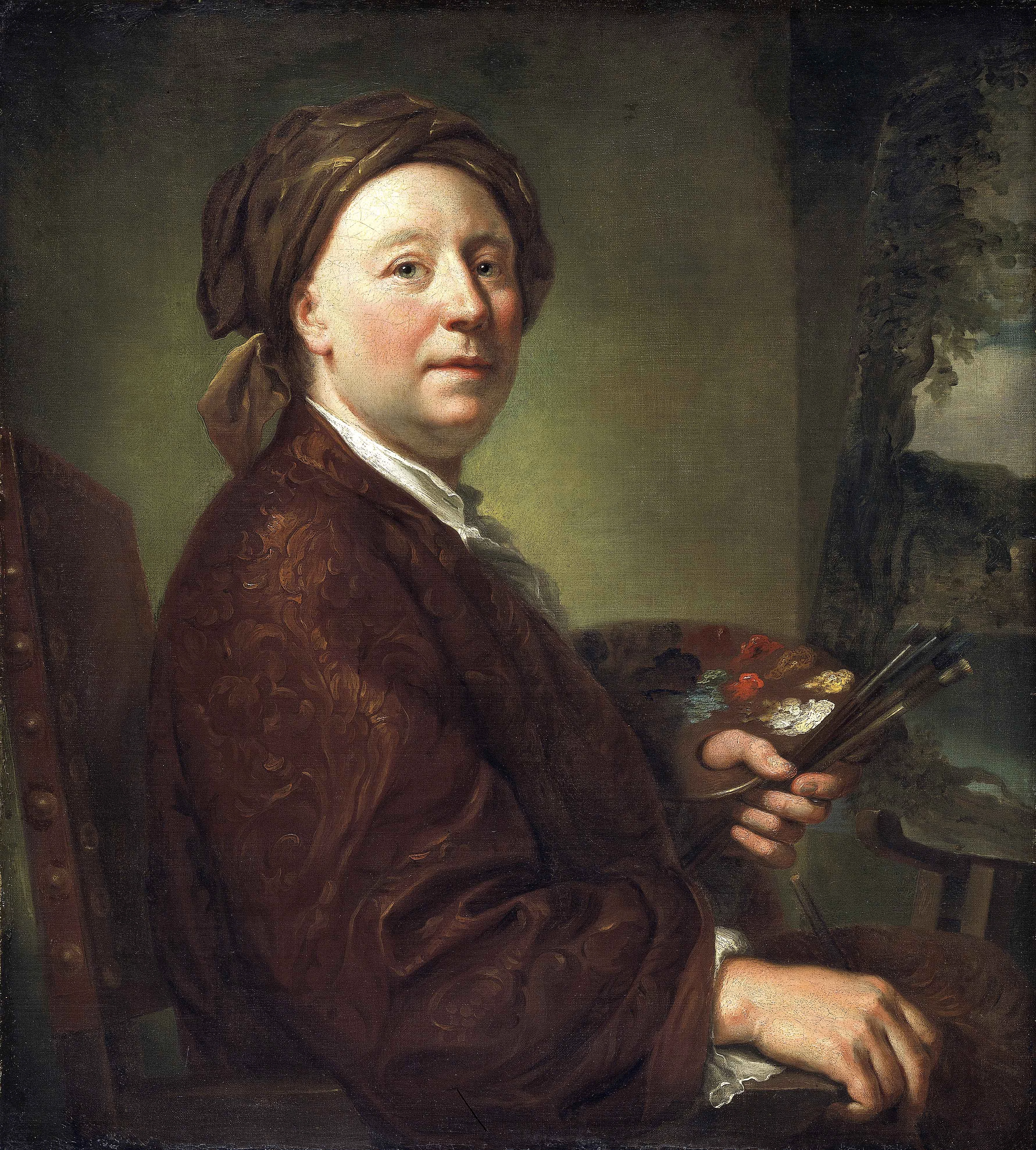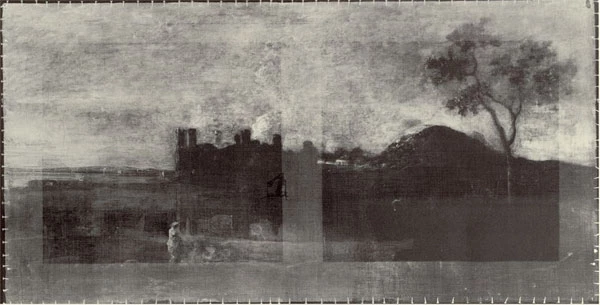Discovering the secrets beneath - 18th century paintings under the microscope
Richard Wilson (1714-1782). This portrait was painted in Rome by Anton Mengs in return for one of Wilson's landscapes - a gesture of friendship and mutual admiration.
Caernarvon Castle X-ray image (NMW A 73)
Caernarvon Castle by Richard Wilson
Dolbadarn Castle X-ray image (NMW A 72)
Dolbadarn Castle in I.R. light (NMW A 5203)
Over the past few years, the Museum has been examining a number of paintings in the collections by Richard Wilson. Modern scientific equipment can reveal hidden details about the structure and materials used in these paintings. The results provide a fascinating insight into the artist's working methods and have led to discovering the origin of some of the more doubtful paintings from Wilson's work.
Infra-Red Light
Infra-red light has been used to see whether the paintings have subsequently been altered or painted over by the artist. Infra-red light can penetrate all but the deepest blue pigments to reveal any dark tones overlying a light coloured ground. It has been discovered that there are underdrawings in both the oil sketch of Dolbadarn Castle (NMW A 5203) and the large finished painting of the same subject (NMW A 72). In the oil sketch, the underdrawing includes a bridge across the river in the distance and a fence in the right foreground. Neither of these features were used in the final sketch. Furthermore in the large painted version Mount Snowdon is included in the background and the distant riverside buildings are moved further to the left. His ability to rework his designs brings variety to the many versions he painted of the same subjects and helps explain how he gives his English and Welsh views a grand classical appearance.
Paint Structure and Materials
Subjecting Wilson's work to X-rays has enabled the structure of Wilson's paintings to be examined. X-rays easily penetrate some materials, but are reflected by others. Some pigments traditionally used in oil painting come from heavy metals such as mercury, cadmium and lead. Lead white being one of the most commonly used. X-rays show up the structure of the painting and any changes that may have been made using lead white. Wilson usually painted his skies in a mixture of lead white and a blue pigment only down as far as the horizon, skirting around any trees and foliage silhouetted against the sky. The foreground and trees are painted largely with earth colours, which X-rays easily penetrate. A typical X-ray of a painting by Wilson should show a strong contrast between sky and foreground areas. This is best illustrated by Caernarfon Castle (NMW A 73). Any landscape not showing this characteristic contrast therefore can be assumed to have been produced by someone other than Wilson.
A few of the paintings examined so far show that Wilson sometimes completely reworked a composition. Dinas Bran (NMW A 3277) was originally started as a View of Tivoli (see NMW A 495). The town on the slopes of the hill is clearly visible in X-ray together with a wayside shrine, which occurs in other versions of that subject. He also occasionally reused a canvas. Dolbadarn Castle (NMW A 72) has been painted over a portrait of a woman, and Landscape with Banditti around a Tent (NMW A 69) is painted over a Venetian-style reclining nude.
Powerful microscopes
Tiny paint samples have been taken and looked at under incredibly powerful microscopes.
The pigments found in the paint layers almost exactly match the palette Wilson used. Prussian blue and indigo mixed with lead white are the chief pigments found in his skies, and ochre, Naples yellow, red and yellow lakes, Prussian blue and indigo in his foliage and foregrounds. Ultramarine blue however, which, according to contemporary accounts, Wilson used in finishing his skies, has not yet been found.
Proving Fakes
Although most of Wilson's close followers would have used a very similar palette to that of their master, this type of modern analysis has proved that later imitations were false as the pictures contained pigments that were not known in Wilson's day. These include NMW A 5195 Coast Scene near Naples, which contains cobalt blue, first introduced in 1817 and NMW A 5206 Cilgerran Castle which has a ground containing barytes, introduced at the end of the 18th century.
This research has produced information vital to a deeper historical understanding of individual works by Wilson, as well as some definite conclusions as to the status of paintings of doubtful origin.




